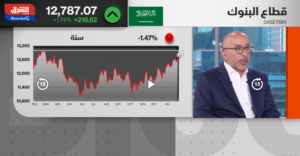These Dubai communities stick to arange whatever be the market cycle
Whatever the market cycle, the likes of International City, Discovery Gardens stick with consi
One of the illusions a historical narrative can produce is that people at the time can see how the plot is going as clearly as safely-removed readers do. We know how it comes out, but certainly people at the time did not.
When we peruse through the stories of 2010-11, there was a sense of financial precariousness after the bubble had burst. Around that time, research focused on expected price growth in many real estate communities such as International City, Discovery Gardens, Sports City and IMPZ.
Fast forward a dozen years later, and there is scarcely any mention of these areas, as newer communities have taken over, both in terms of price growth and headlines. This is not unique to Dubai. In most developed cities, analysts focus on areas that have the most attention grabbing information, and other communities disappear into the background.
In New York for example, areas such as MidTown, Upper East Side and Park Avenue, Brooklyn and Greenwich Village regularly featured in the news, whereas areas like Morrisiana and Cortona were barely mentioned. Look deeper, and a different picture starts to emerge in each of these communities, which determines not only the price trajectory but also the returns that have accrued to the long-term investor.
Communities that hold their own
Prices in International City and Discovery Gardens peaked in 2008 and never reached those summits since. From that time, investors have received a cumulative rental return of between 100-130 per cent, a figure that never showed up in any of the statistics. In other words, returns that were not seen.
Similar to Morrisiana, these communities were catering to the lower income category, and during the Covid pandemic, prices declined by less than 10 per cent, providing downside protection cover on real estate portfolios. Even as foreclosure rates increased, cashflow returns remained attractive (they continue to do so).
As authorities became more strict on the ‘room sharing’ phenomena, rental rates started to rise post-Covid, rising by as much as 15-20 per cent, thereby providing investors cash flow yields close to double-digit returns. Likewise, in Morrisiana, even though subprime rates were nearly double that of other neighborhoods, the credit bubble burst in 2007-08 led to price declines of 10-12 per cent.
Revised investor focus
This progression highlights a series of variables that investors should keep in mind:
- Even as headlines capture price returns, it is the total returns that investors should be focusing on;
- During inflationary times, as inventory sits on market for longer periods of time, cashflow returns acquire greater importance (accounting for between 50-80 per cent of overall returns); and
- Longer hold periods of assets in real estate translate into community-wide improvements as regulatory changes trigger socioeconomic variables, lifting the floor as a different category of people start to enter the neighborhood.
To be sure, these changes take time, and investors have to be patient, but it is likely that as the shape structure of the market starts to shift, analysts will ‘follow the money’ and start to cover these communities again in a more prominent fashion.
The median investor (whether in real estate or the capital markets) is the income-oriented investor, and it is these investors who focus closely on their total returns, not the news headlines that are covered. As rising interest rates start to work their way throughout the economy, the required rate of return on capital starts to rise.
Moreover, it starts to rise in the form of cashflow returns. These yields become the proverbial shelter from the storm that investors are now looking for.





